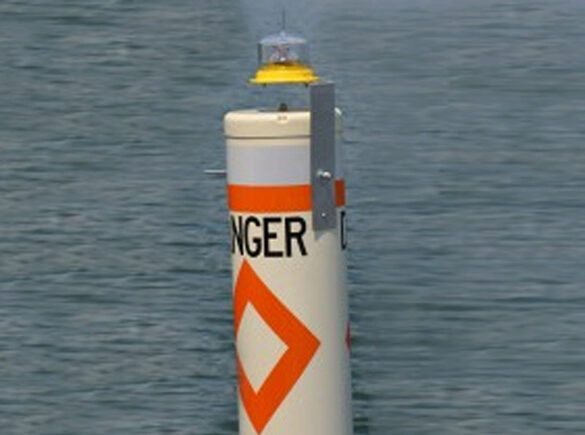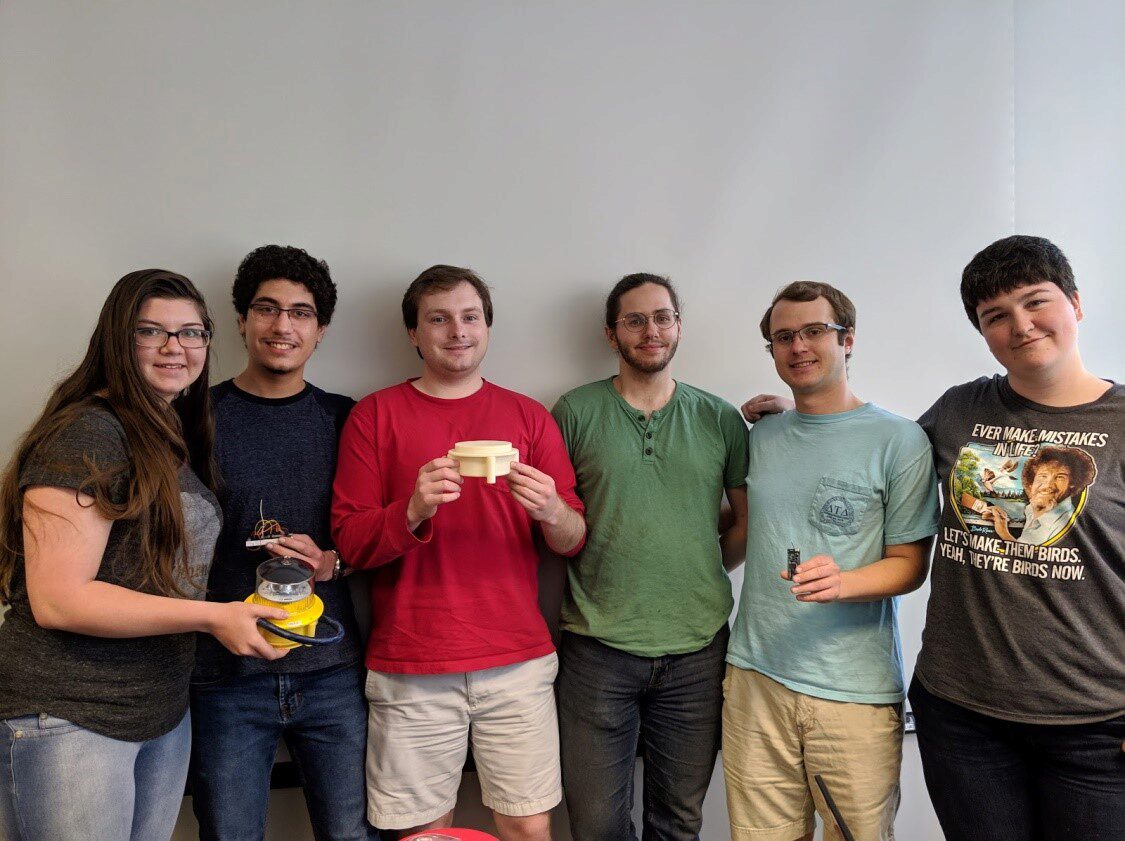Capstone Sponsor Spotlight: Lake Lanier Association
Capstone season is upon us and there are over 50 Mechanical Engineering teams showcasing their projects at the Expo on April 23rd at the McCamish Pavilion. The Capstone Design course is generously supported by numerous corporate partners and alumni. This weekly article series will highlight a few select sponsors, their projects, and the student teams working on their projects.
Lake Lanier Association was founded in 1966 as a volunteer group and has grown to approximately 4,500 members. The nonprofit association strives to preserve the quality and quantity of the water for all users who rely on the lake and its watershed to enhance their quality of life. They do so by creating solutions for threats to Lake Lanier, educating the public on issues affecting the lake, and advocating for all users of the lake.
Problem: Lake Lanier has approximately 300 submerged hazards located across the lake that are marked using solar-powered hazard light buoys. Lake Lanier Association performs seven yearly checks at night to check for hazard light outages. To check for these outages, two people drive on a boat at night to manually check each and every hazard light on the lake. This process takes approximately eight hours to complete. If a hazard light is out, that means that the boaters are driving straight towards a submerged hazard without a visual warning. Lake Lanier Association sponsored capstone design projects to gather ideas on how notify members that a hazard light is out instead of needing to manually check each hazard light.

Projected Impact: If hazard lights are damaged, it can be dangerous for boaters to drive around Lake Lanier at night. The people checking the lights must cover the majority of the 37,066 acres of Lake Lanier by boat. With the current method of checking for light outages, members are wasting time and money while also risking their safety. Because Lake Lanier Association is a non-profit, keeping costs low is extremely important. By creating a system that notifies members automatically of outages, this could cut down on the amount of time and money it takes to replace a hazard light that is out. A light can be out for days before members know about it which increases safety risks for night boaters. A new system for identifying light outages could also increase safety on the lake as lights can be replaced or fixed as they break.

Team 1: Team SOLerr – Catherine Schlueter, Nadim Hammoud, Cassiopeia Cartwright, Nolan Kelligrew, Paul Yavarow, Patrick McVay
Faculty Adviser: Dr. Aaron Young
Proposed Solution: Team SOLerr is creating a low-cost, solution to check for hazard light outages. They have tested radio communication distance and signal strength on the roofs of buildings across campus as well as on Lake Lanier. The problem that Team SOLerr is running into the most, is determining how to ensure the radio-capable devices will last several years without replacing the batteries. Currently, the team has developed a prototype solution that involves attaching a radio-capable device to the bottom of each hazard light buoy using a 3D-printed attachment. These devices will be mesh units that communicate with a central, master unit. Every night, the devices will turn on briefly to notify the master unit if the hazard light is on or not. The workers could then visit the location during the day to fix the specific inoperative hazard light. This solution eliminates the need for workers to venture out in the night to find inoperative lights and thus significantly improves worker safety.
Team 2: Team Lit Lakers – Paul Kim, Logan Walker, Joseph Schneider, Sepehr Pourshiravi, Malachi Lynn
Faculty Advisor: Dr. Tequila Harris
Team Lit Lakers is designing a wireless solution that will monitor the solar light hazard warning system and notify maintenance workers remotely that a light has malfunctioned. The team’s system uses photocell sensors and battery voltage sensor to collect data once each day to check the operation of the hazard light. The data is processed by a micro-controller which uses a Long Range module with an antenna to output a message that is relayed by one of the nearby Gateways on the shore, which has a range of 5-10 km. The devices and Gateways are all registered on The Things Network, which provides a server for the messages to be seen on its own closed network. The team wanted to create a solution that would allow maintenance staff to inspect hazard lights during the day and eliminate the need to use a boat at night.
Both teams have enjoyed working with Lake Lanier Association and appreciated the responsiveness they have experience with their sponsor. Joanna Cloud, Executive Director for Lake Lanier Association, said the teams have both designed interesting solutions to the problem and is looking forward to the final solution, which will be presented at the expo.
Check out over 200 exciting capstone design projects with real-world impacts at the Spring 2019 Capstone Design Expo on April 23rd at 4:30 pm in the McCamish Pavilion. More information on how to RSVP is on the website. Please invite friends and family to attend and cheer for our graduating seniors.
All senior students in Mechanical Engineering culminate their undergraduate educational experience with the Capstone Design course in order to provide firsthand experience at solving real world problems in a team environment. Students typically work in teams of four to six individuals and each team is advised by a faculty member. Companies interested in submitting a project for consideration can contact Dr. Amit S. Jariwala, at 404-894-3931 or via email at amit.jariwala@gatech.edu.
